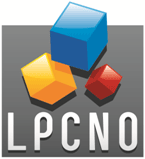SYNTHESIS, CHARACTERISATION AND SURFACE CHEMISTRY OF LUMINESCENT METAL NITRIDE NANOCRYSTALS. TOWARDS ENVIRONMENTALLY FRIENDLY NANOMATERIALS.
CHEMISTRY & GREEN CHEMISTRY

Lab: LPCNO
Duration: NanoX master Internship (8 months part-time in-lab immersion)
Latest starting date: 30/10/2023
Localisation: LPCNO
INSA TOULOUSE
135, Avenue de Rangueil
31400 TOULOUSE
This project will be carried out at the LPCNO in the "Nanostructures and Organometallic Chemistry" team, which has internationally recognized expertise in the synthesis, characterization and exploitation of the properties of nanoparticles and their assemblies. This research is accompanied by applied developments in a variety of fields (oncology, microelectronics, energy and catalysis), and is helping to meet the major scientific and social challenges such as the fight against cancer, the development of more environmentally friendly materials, CO2 conversion and energy storage. In addition, this project will benefit from a high-level scientific environment that is particularly conducive to the project's success, thanks to the expertise of the LPCNO physics teams.
Supervisors:
Fabien DELPECH, Professor fdelpech@insa-toulouse.fr
Céline NAYRAL, Associate Professor cnayral@insa-toulouse.fr
This research master's degree project could be followed by a PhD
Work package:
Thanks to their optical properties (which vary with size), semiconductor nanocrystals (or quantum dots - QDs) have gone from being laboratory objects to therapeutic tools (luminescent biomarkers) and electronic components (light-emitting diodes - LEDs - for the latest generations of Sony and Samsung TV screens) in less than two decades [1]. However, these QDs are mainly composed of scarce, toxic elements such as cadmium, lead, selenium and tellurium. The cost and highly negative environmental impact of these elements have recently stimulated the search for alternative, more environmentally-friendly materials.
Among these, metal nitrides (in particular indium -InN- and zinc -Zn3N2- nitrides) are focusing attention due to the low toxicity of their constituent elements [2]. In addition, they have the ability to emit light over the entire visible and near-infrared range (above 700 nm, see figure). It is opening up a wide field of applications in many fields, including electronics, energy (display devices, photodetectors, photovoltaics, etc.) [3], photocatalysis [4] and biomedical applications (biocompatible luminescent markers) [2b]. However, simple and high-performance preparation methods are still lacking before any applications can be envisaged. Recently, the LPCNO's "Nanostructures and Organometallic Chemistry" team has been studying and developing new ways of synthesizing metal nitride QDs, such as InN, using organometallic chemistry methods.
The aim of this master project is to propose the optimization of a new synthesis route for non-toxic QDs: indium nitrides (InN). In order to modulate and control the optical properties for different applications, it is necessary to control the size, morphology and surface of these nano-objects. These challenges have so far only been partially met. The first of these involves controlling the size dispersity of these nano-objects, which is a key parameter in controlling luminescence and the purity of the wavelengths emitted. A second issue concerns the growth of a surface shell to protect these air-sensitive QDs against oxidation, while at the same time ensuring the optimized optical properties (maximizing luminescence quantum yield, stability over time) that are essential for applications.
This topic will cover all organometallic chemistry field to QDs formation and characterization. It provides an opportunity to get familiar with techniques for synthesizing and handling air-sensitive products (Schlenk line, glove box) and to master a wide range of characterization techniques: NMR spectroscopies, X-ray powder diffraction and electron microscopies (TEM, HRTEM) specific to the study of nano-objects, UV-vis absorbance and photoluminescence spectroscopies.
References:
[1] D.V. Talapin, J.-S. Lee, M.V. Kovalenko, E.V. Shevchenko, Chem. Rev. 2010, 110, 389.
[2] a) S. M. Fairclough, P. N. Taylor, C. T. Smith, P. C. J. Clark, and al. Adv. Optical Mater. 2020, 8, 2000604. b) S. Prabha, D. Durgalakshmi, K. Subramani, P. Aruna, S. Ganesan ACS Appl. Mater. Interfaces 2020, 12, 19245.
[3] R. Ahumada-Lazo, S. M. Fairclough, S. J. O. Hardman, P. N. Taylor, and al. ACS Appl. Nano Mater. 2019, 2, 7214.
[4] T. Rao, W. Cai, H. Zhang, W. Liao J. Mater. Chem. C, 2021, 9, 5323.
[5] P.N. Taylor, M.A. Schreuder, T.M. Smeeton, and al. J. Mater. Chem. C, 2014, 2, 4379.
Areas of expertise:
Nanochemistry, Semiconductor nanocrystals, Quantum dots, Organometallic chemistry, Indium nitrides, Optical properties, Luminescence.
Required skills for the internship:
The candidate will have a solid background in general chemistry. We are looking for a curious person, rigorous and trustable, who likes to share and interact in a working group.
